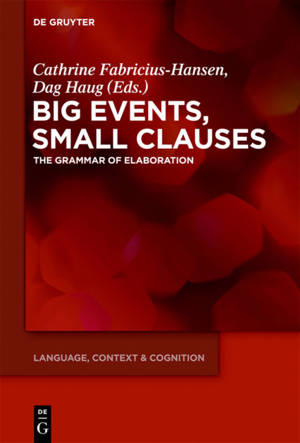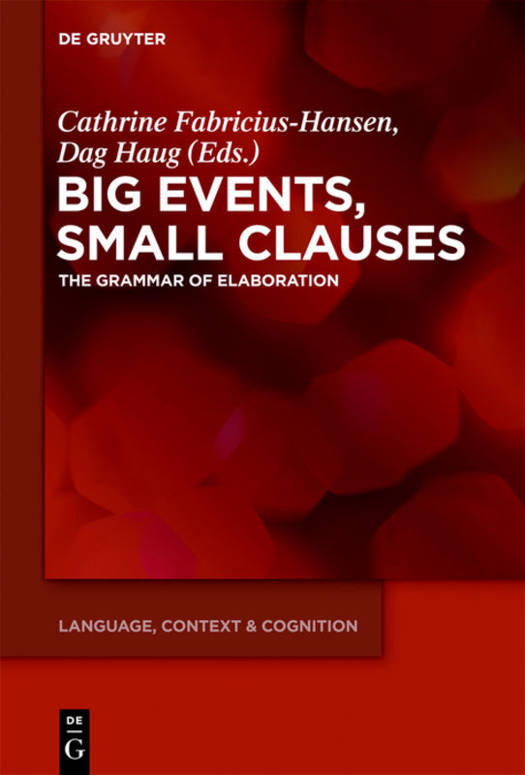
- Retrait gratuit dans votre magasin Club
- 7.000.000 titres dans notre catalogue
- Payer en toute sécurité
- Toujours un magasin près de chez vous
- Retrait gratuit dans votre magasin Club
- 7.000.0000 titres dans notre catalogue
- Payer en toute sécurité
- Toujours un magasin près de chez vous
Big Events, Small Clauses
The Grammar of Elaboration
Description
This book investigates specific syntactic means of event elaboration
across seven Indo-European languages (English, German, Norwegian,
French, Russian, Latin and Ancient Greek): bare and comitative small
clauses ("absolutes"), participle constructions and related clause-like but
non-finite adjuncts that increase descriptive granularity with respect to
constitutive parts of the matrix event (elaboration in the narrowest
sense), or describe eventualities that are co-located and connected
with but not part of the matrix event. The book falls in two
parts. Part I addresses central theoretical issues: How is the co-eventive
interpretation of such adjuncts achieved? What is the internal syntax of
participial and converb constructions? How do these constructions
function at the discourse level, as compared to various finite structures
that are available for co-eventive elaboration? Part II takes an empirical
cross-linguistic perspective. It consists of five self-contained chapters that
are based on parallel corpora and study either the use of a specific
construction across at least two of the seven object languages, or how a
specific construction is rendered in other languages.
Spécifications
Parties prenantes
- Editeur:
Contenu
- Nombre de pages :
- 466
- Langue:
- Anglais
- Collection :
- Tome:
- n° 12
Caractéristiques
- EAN:
- 9783110285802
- Date de parution :
- 26-09-12
- Format:
- Livre relié
- Format numérique:
- Genaaid
- Dimensions :
- 156 mm x 234 mm
- Poids :
- 1061 g

Les avis
Nous publions uniquement les avis qui respectent les conditions requises. Consultez nos conditions pour les avis.





